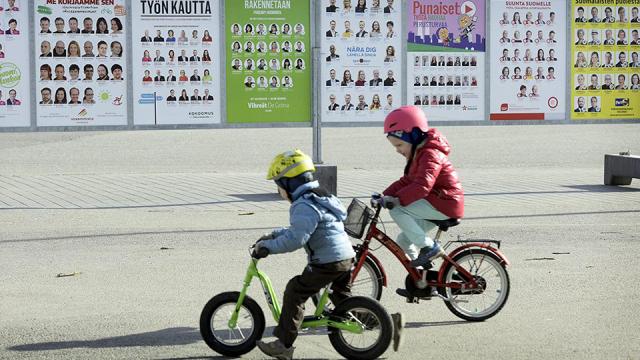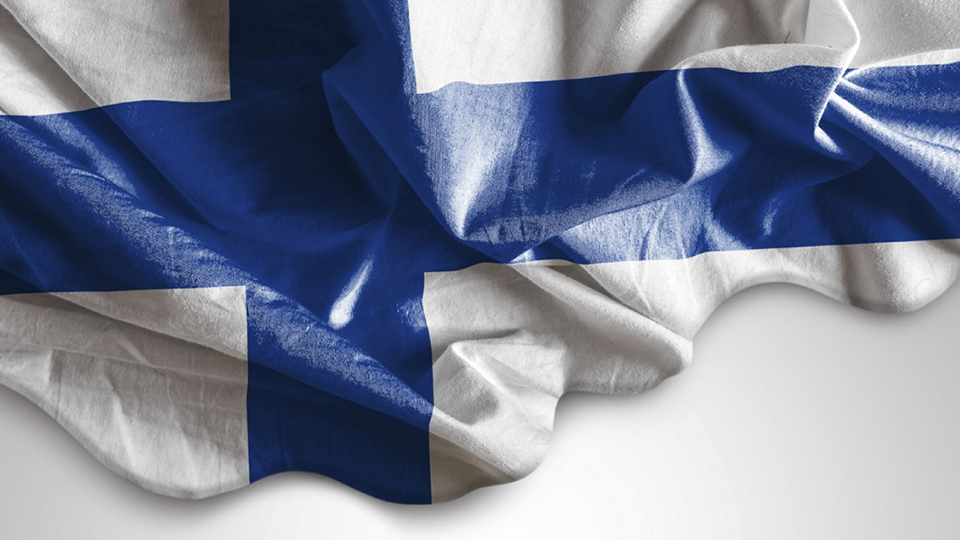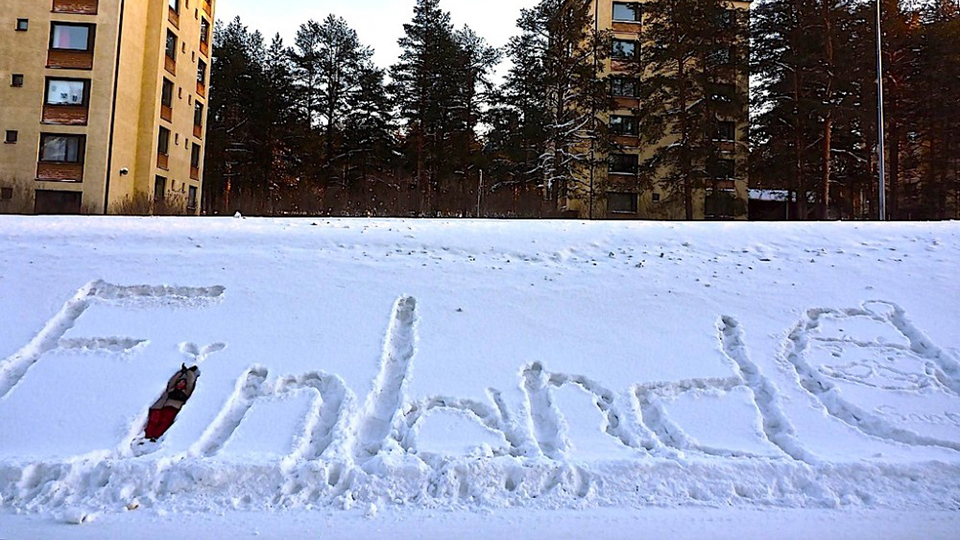
Finns have low poverty rates, free education, strong welfare programs – and everyone has rights to nature. But as progressive as this all sounds, Finland is no fairy-tale, something that was confirmed in national elections earlier this month.
“The neoliberal ideology has been dominant here for a few decades,” said global politics professor Heikki Patomäki, and most visible internationally concerning the country's hardline stance towards Greece’s debt.
I met Patomäki a few weeks ago on Helsinki’s streets, where he was campaigning for Vasemmisto (Left Party) before Finnish elections on April 19 brought the opposition Center Party to power. Patomäki authored the Left Party's economic manifesto that calls for stimulus to create green jobs and maintain public services.
Patomäki taught in Britain in 1998, when New Labour introduced tuition fees, and upon his return to Finland five years later he saw the same ideology seeping into the Finnish system. Now, they're even talking about charging small fees to foreign students, he said, eroding the idea of free education.
“The education system is key to framing the debate. Britain has led the charge across Europe, with universities becoming more privatized and pushing neoliberalism,” he said.
Finland is also not immune to the growing politics of prejudice surging in Europe since the financial crash. In 2011, the openly racist Finns Party (previously called the True Finns) rose unexpectedly to become one of the country's biggest parties – and on April 19 they further consolidated their position, coming in second only to the winning Centre Party.
Like many in Europe's far-right political scene, Finns Party has become institutionalized, with far reaching connections to rightest groups and populists with conservative values. They've become perhaps best known for ludicrous comments like comparing same-sex marriage to having the right to marry one’s dog. Finland's equal marriage bill was prompted to Parliament via a people’s petition – a petition here needs over 50,000 signatures, and the equal marriage law petition got nearly 150,000 – and is moving forward.
Like in other countries, Finns Party support comes from rural areas – where there are the fewest immigrants – whereas the urban centers provide the strongest base for Greens and the Left. The country's increasing rural-urban split saw a progressive shift this year in the cities, where the Greens increased their seats from 10 to 15 – including the election of Ozan Yanar, who alongside Nasima Razmyar of the Social Democratic Party became the first immigrants to become MPs.
Along with the Left Party, the Greens remain the True Finns’ staunchest opponents – not only because of environmental priorities but due to their strong support of LGBT rights. The Greens’ 15 seats in a 200-seat Parliament came from an 8.5% share of the vote.
Following the election results, the winning Centre Party is now deciding on a coalition that could range from very conservative to one with close ties to trade unions, and could include the Greens.
Looking back, Finland’s electoral model produces coalition governments that often involve parties objecting to austerity and neoliberalism. In the last three parliaments, the government has always involved either the Left, the Greens or the Social Democratic Party. Both the Left and Greens have progressive platforms, the SDP is far more left than Britain’s New Labour – for instance, the current leader comes from the trade unions. Also, if you look at a political compass of the Finland’s candidates, it is clear that Finns have far more choices that are left-leaning or socially progressive.
In conversations with campaigners from different parties, it became clear that the Left Party and Greens have both pressured the SDP to withstand the neoliberal shift to the right. The SDP, Greens and Left even hold similar ground on some issues, for instance standing against the Transatlantic Trade and Investment Partnership, or calling for a basic income.
The Finnish system maintains a relatively healthy pluralism; the strength of anti-neoliberal parties is a strong indicator of why, so far, the country has retained free education and high welfare.
I spent the election night with the Left Party. Among the dismal results, the electoral system facilitated a glimmer of hope, showing the party to be transforming with more young feminist, green and radical voices coming into leadership. Seven of the Left's 12 MPs are now women, including Li Andersson, a 27-year-old who is already one of the country's leading voices against austerity.
From an outsider's perspective, Finland’s democracy appears simultaneously fractured and functioning. Most needed are progressive voices to assert a vision that reaches out to people in rural regions, as an alternative to populist racist voices. But coming to Finland from the UK, the country offers many ways of doing politics better. The men-women ratio is far nearer parity and I cannot find like for like cases of billionaires influencing parties or revolving door politics.
3 WAYS TO SHOW YOUR SUPPORT
- Log in to post comments



















